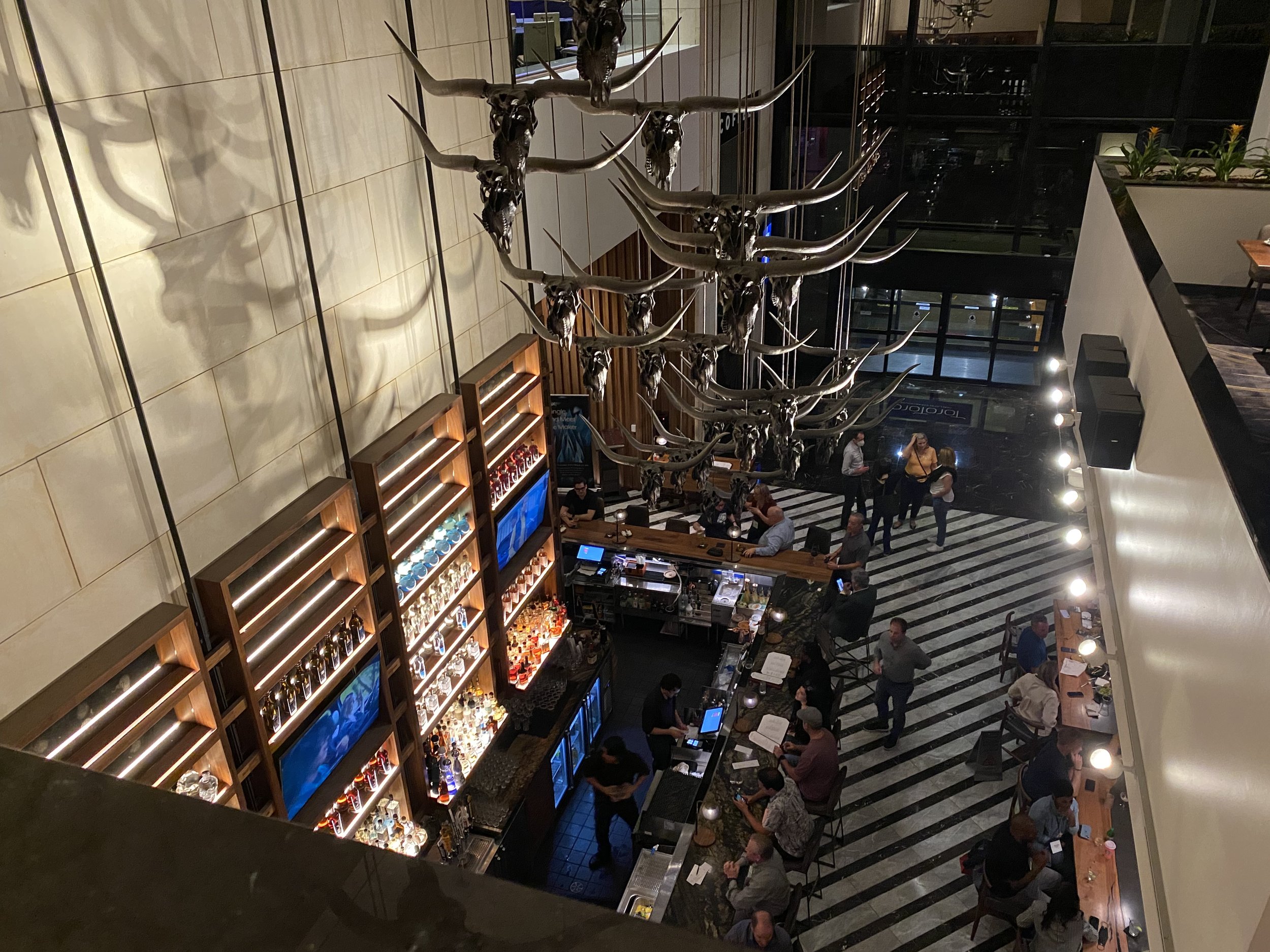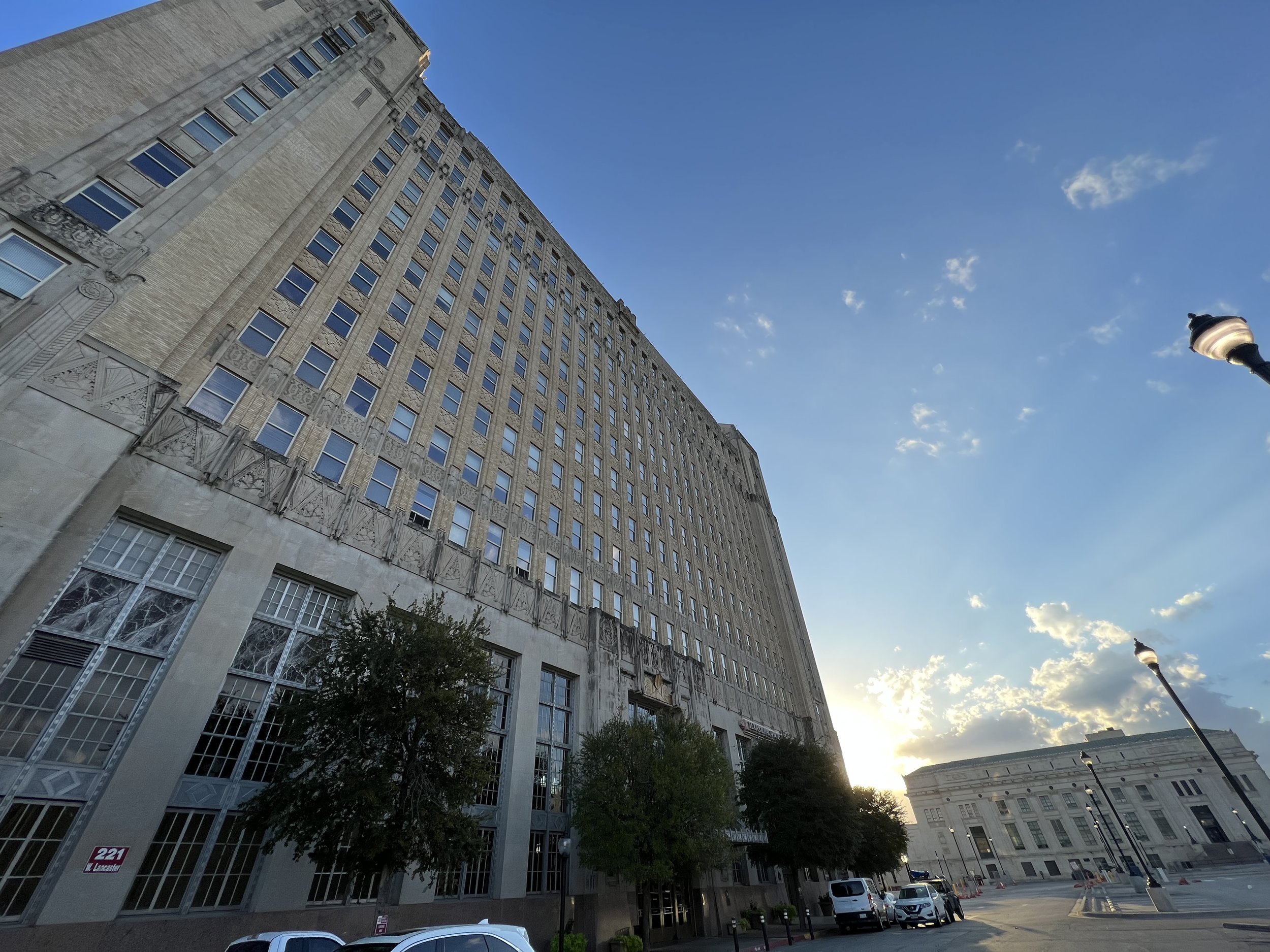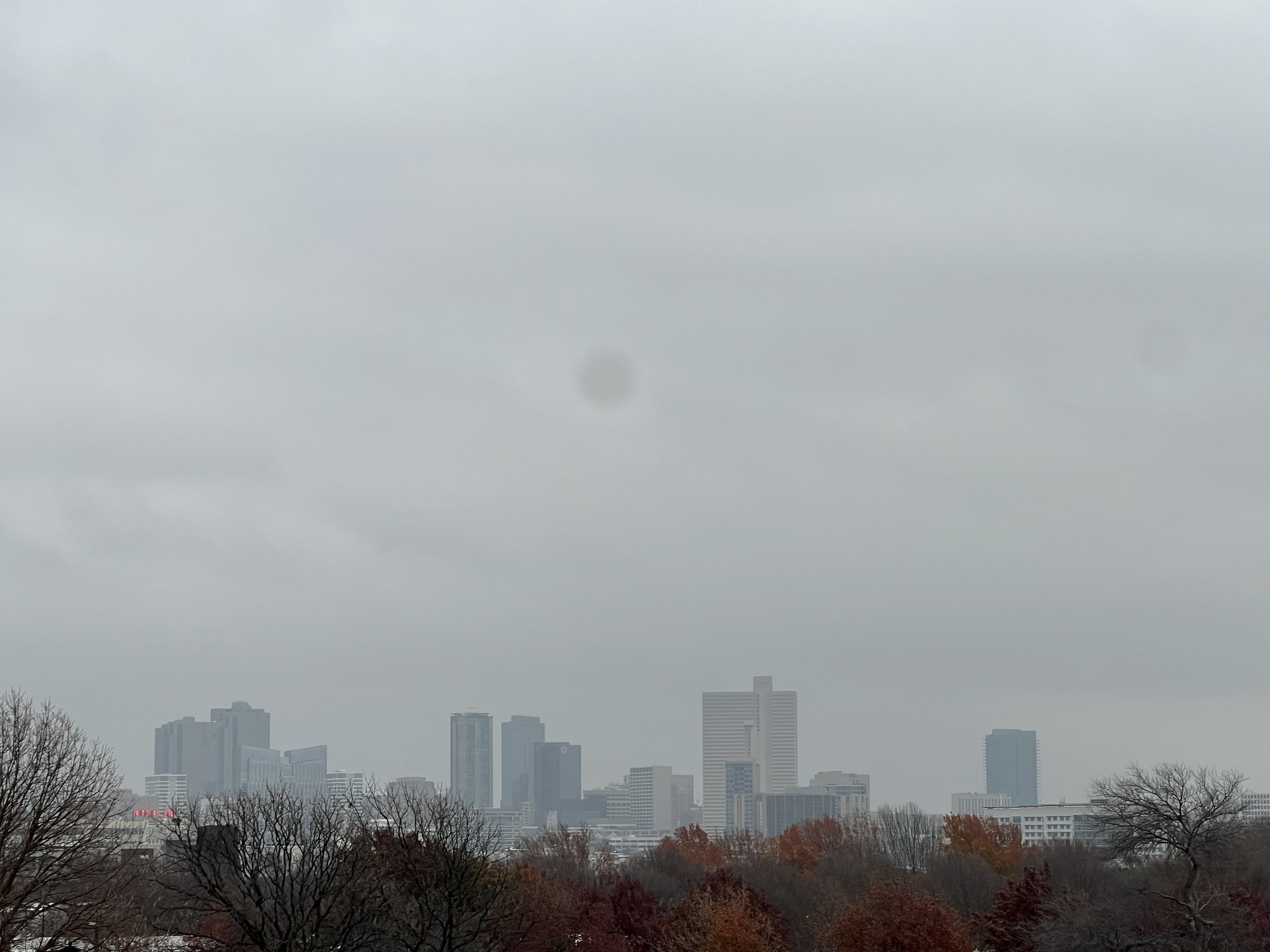It's Just Fine in Panther City
I intend for this essay to be a love letter to Fort Worth, because it was my home for 15 years. It is still the one place I’ve lived the longest. It is not where I am from, but it’s as close to a home as I have.
Fort Worth doesn’t have much of a national profile. It is the FW in DFW and has always taken a backseat to Dallas – its more urbane sibling located just 30 miles east. I almost called Dallas more sophisticated, but doing that would not be true. I think Fort Worth is the more sophisticated city, even if it is a quieter and more regional kind of place.
There’s Billy Bob’s Texas on the North Side, the world-class art museums on the West Side, Texas Wesleyan University on the East Side and the Fairmount District on the Near Southside. Years ago the tourist bureau came up with the tagline “Cowboys & Culture” and, to be honest, they did pretty good with that one. The Fort Worth Stock Show & Rodeo takes place just a mile or two down the road from the Bass Performance Hall where the Van Cliburn International Piano Competition happens every year. In February you can smell the livestock from the Kimbell Art Museum lawn, a building considered by many to be architect Louis Kahn’s masterpiece (and later desecrated by Renzo Piano’s addition).
I came to Fort Worth to go to Texas Christian University, or TCU as it’s better known these days. Despite the name, TCU is not particularly religious or devout school, anymore than say, Duke or SMU, and much less than its sometimes football rival down in Waco, Baylor. The God at TCU, unquestionably, is money. From its multi-billion-dollar endowment to its wealthy and well-heeled students, you’re much more likely to discuss the price of a barrel of oil there than the Holy Trinity.
Speaking of the Trinity, that’s the name of the river that divides the city. Compared to Southern cities like New Orleans or Jacksonville, the Trinity is a glorified creek, but the city was smart enough to build walking and bicycle trails alongside it, which function as a bicycle interstate through the city if the weather is nice enough to be out and about.
It’s hot in Fort Worth. The long-gone red light district was called Hell’s Half Acre and Hell is a good description of Fort Worth in the summer. Sometime in July the temperature climbs above 100 degrees and it mostly stays there until sometime in October. The city sits at the bottom of the Great Plains, so trees are in relatively short supply. There’s no beach. You just sit in the air conditioning or sweat it out on concrete that kicks the temperature any higher.
There are three types of food to eat in Fort Worth. There are hamburgers and steaks; there is Tex-Mex; and there is beef barbecue. You might see lawyers in their starched white shirts, jeans and boots drinking ice cold schooners of Miller Lite at Railhead off Montgomery Ave. Or you might relax on the patio with a frozen margarita at Uncle Julio’s off Camp Bowie. If you’re a TCU student (or one of the many graduates who still live in the surrounding neighborhood), you might top your burger with avocado at Dutch’s. If you are particularly hip you may make your way over to Los Asaderos on the North Side for their seasoned fajitas. There are other restaurants, including the famed patio at Joe T. Garcia’s, but, they are mostly variations on the themes above. I always loved the wood-paneled walls and taxidermied heads at Angelo’s myself.
A good day in Fort Worth is in late October or maybe early November. The heat has finally broken and the windy, chilly cold hasn’t set in yet. TCU is playing a home game and you can hear the crowd celebrating a touchdown in the distance. The roads are fairly clear and you can go downtown and walk by the Philip Johnson’s Fort Worth Water Gardens or Sundance Square. Maybe instead of going downtown you spend the afternoon in the Modern Art Museum, gawking at work by Chuck Close and Ed Rusche or go rifle through the bins at Doc’s Record & Vintage. When night falls, you head down West 7th and grab a drink or something to eat along that corridor. Maybe you go dancing at Gloria’s. Maybe you head down Magnolia Ave. or to Nickel City off Main Street.
The Bill Pickett Invitational Rodeo is the longest-running Black rodeo in the U.S., and it makes its home in the Stockyards, which have also recently undergone a major update. Jazz Cafe is still there, where you can get a good Greek breakfast and some West Coast cool jazz in one stop. Carshon’s, the cash-only Jewish deli, would be a contender for my last meal of all time. It’s truly decadent and good and unique like few other places are.
Compared to Jackosnville, where I live now, there isn’t much to do outside in Fort Worth – it is not an outdoor lover’s paradise. It’s a built city that was built for you to spend money, mostly on food, drink and clothing. To that end, I am reminded of a line in The Last Picture Show by Larry McMurtry, who once taught at TCU. He’s talking about Wichita Falls in the passage, but the truth remains for most of North Texas: “‘Life’s too damn hard here,’” Lois said. ‘The land’s got too much power over you. Being rich here is a good way to go insane. Everything’s flat and empty and there’s nothing to do but spend money.’”
The shortest history I can give you of Fort Worth goes something like this:
In the 19th century it was a military outpost that became an important rail stop for cattlemen shipping their stock up north to Kansas City. It grew rapidly in the early 20th century and became a home base for the West Texas oil industry. Sid Richardson conducted most of his business there, and along with local boosters like Fort Worth Star-Telegram publisher Amon Carter, he turned it into a booming Western city by the middle of the century. The city briefly fell into urban decay and disrepair in the ‘70s and ‘80s before a major resurgence led by the billionaire Bass Family, the heirs to Richardson’s massive oil fortune, resurrected it and made it a bit of a jewel among Texas cities – a place where the cost of living was cheap and the quality of life was high.
It is politically conservative, perhaps the most conservative city in Texas, although, again, I would argue that conservatism is mostly a fiscal sort rather than a religious sort. People go to church on Sunday, yes, but church is as much a networking exercise as it is a spiritual one. The business of Fort Worth is business, and that business, more or less, is the oil business and those that support it.
Fort Worth was a good city for me, and a good place for me to get on my feet. My grandfather had exhibited cattle there in the ‘50s and ‘60s, and I was familiar enough with that cowboy world to speak the language and get at least somewhat gainfully employed. I wrote reviews for the Star-Telegram, often about the honky-tonk acts that came through Billy Bob’s Texas and I also covered events at the Will Rogers Memorial Center. At TCU there was enough academic freedom to explore new ideas and experiences, but enough grounding to stay on task. I was on scholarship; I didn’t have a lot of financial or social support. I needed to graduate and get a job. Fort Worth is a good city for practically-minded people with modest-but-profitable ambitions.
That was my main reason for going to TCU in the first place. Texas A&M and Texas Tech were in small towns that reminded me too much of the East Texas town I was desperate to get out of. I was a little intimidated by Austin until I got to know it better. Waco seemed – and still seems – weird and backwards to me. I figured if I could make it anywhere, I could make it in Fort Worth.
When I got there in 2003 there were about 600,000 people living in the city. Now there are nearly one million. It was the perfect size to not get lost – and also to get found.
The images that come to mind for me when I think about Fort Worth are a shiny belt buckle, a sharp Stetson, a King Ranch edition truck, and those sandy Art Deco buildings downtown. The sound is roadhouse honky-tonk music, someone like Ray Sharpe. The city produced plenty of great musicians – Delbert McClinton and Leon Bridges, sure, but also King Curtis and Cornell Dupree, who made the best R&B music ever made anywhere by anyone, period. There is always a blues jam somewhere in Fort Worth. There is always a place where you can two-step, like the White Elephant or, well, anywhere else.
People work a lot in Fort Worth. I remember first moving to Jacksonville and being told by someone that there was “a lot of work to get done, but also a lot of places to relax.” I could never imagine someone saying that in Fort Worth. I heard lots of people repeat some variation of “work hard, play hard,” though, and people tend to drink hard there, though mostly at home and on the weekends. When one does have the misfortune of misbehaving in public, most folks will look the other way, provided it doesn’t happen too often.
Drive to the east and you’re quickly in the morass that is the rest of the Dallas-Fort Worth Metroplex, specifically Arlington, a place that always seemed so deeply uncool to me that I didn’t even like to stop for gas there. To the north, more Metroplex, mostly surrounding the airport. The south, miles and miles of Interstate 35. Drive out west and you’re, well, West. The trees completely recede and the vistas open up wide and long. The next stop is Abilene and it’s several hours away.
Fort Worth is a good town to be lonely in, because being a little lonely (or lonesome) is a good cowboy trait, after all. People are nice to you, they are friendly and even neighborly, and they are more than happy to leave you alone.
I say that, but, looking back, I had lots of friends there – my friends from Texas Wesleyan, where I worked for nearly a decade; people I graduated from TCU alongside; folks I went to church with – it is a big city that feels like a small town, but it doesn’t hassle you like a small town does.
Last year Leon Bridges released his self-titled album and included a track on it called “Panther City,” and nostalgic ode to Fort Worth (the story goes that a Dallas columnist said the city was so boring a panther could fall asleep in downtown, something the local residents took less as a dig and celebrated. There’s even a sleeping panther statue downtown). I was struck dumb by the song and I played it over and over that fall.
In the summertime on the South Side
It's just fine
In Panther City
Not much happens in “Panther City.” Leon goes to the corner store and gets Little Debbies. He hangs out with his family and quarrels and plays. He mentions Rosedale St., long a haven for cheap drugs, bad sex and other vices. He thinks about old girlfriends. He drives down a street and remembers his youth and the feelings he had there. There’s not much in “Panther City” that couldn’t happen in any other city, but there’s something about the idleness of it that is so deeply Fort Worth. I posted about the song on social media and how it made me miss Fort Worth and quickly got replies from others who had left saying they felt the same kind of way. It’s a dreamy kind of song, and maybe that’s why it fits so well – it’s more evocative than descriptive.
Fort Worth is an underrated city for dreamers. Real dreamy types, I mean. There’s enough industry to keep you occupied and your dreams in reach, but enough space to sort them out when they come along. If you dream a dream in Fort Worth, it feels like your own dream, even if it means you might have to leave to pursue it.
Years ago I interviewed George Grammer, who was the last living link to the Fort Worth Circle, a group of artists who would create a powerful and unique type of midcentury painting. Grammar was kind and gentle and asked about my own writing. He listened and then kindly said, “but you know you can’t stay here and do it.”
And in my heart I knew he was right, but I wasn’t ready to leave then. I didn’t leave until everyone else had dreamed their dreams and moved on and I was the only one left. I’m not sure if I ever had one big dream or just a lot of little snippets of smaller dreams. I knew I wanted to go home to Florida. I knew I wanted to write. But that was about it. My dreams always happened in some faraway place – in the 1960s or the 1890s, in Buenos Aires or Miami – I could never work out the math in my dreams like other people could in theirs. So I stayed under that North Texas sky waiting for what dreams might come to me.
And Fort Worth was a good place for that. Larry McMurtry wrote a fair amount about cowboys and their myths, and In a Narrow Grave, he explored the idea that cowboys have a philosophical side to them. I always found this to be true, and maybe that’s why Fort Worth always appealed to me. It was, more than anywhere other than perhaps Los Angeles, the intellectual home of the cowboy spirit – the place where hard work, crazy ideas and the marketplace all crossed paths. And the city those ideas created isn’t the best city in the world, but it’s pretty good – and it has something to say, something to offer and something to be.
I’ll end my love letter to Fort Worth like any good love letter should end – with declarations of love and beauty. Fort Worth, at night I still dream of your warm caress. The music of your streets dances across my mind like I could waltz across Texas with you. Your gentle heart is never far from mine. I am sorry that I had to leave but I carry you with me wherever I go.










